Andy Warhol
From A to B and Back Again
12 Nov 2018 - 31 Mar 2019
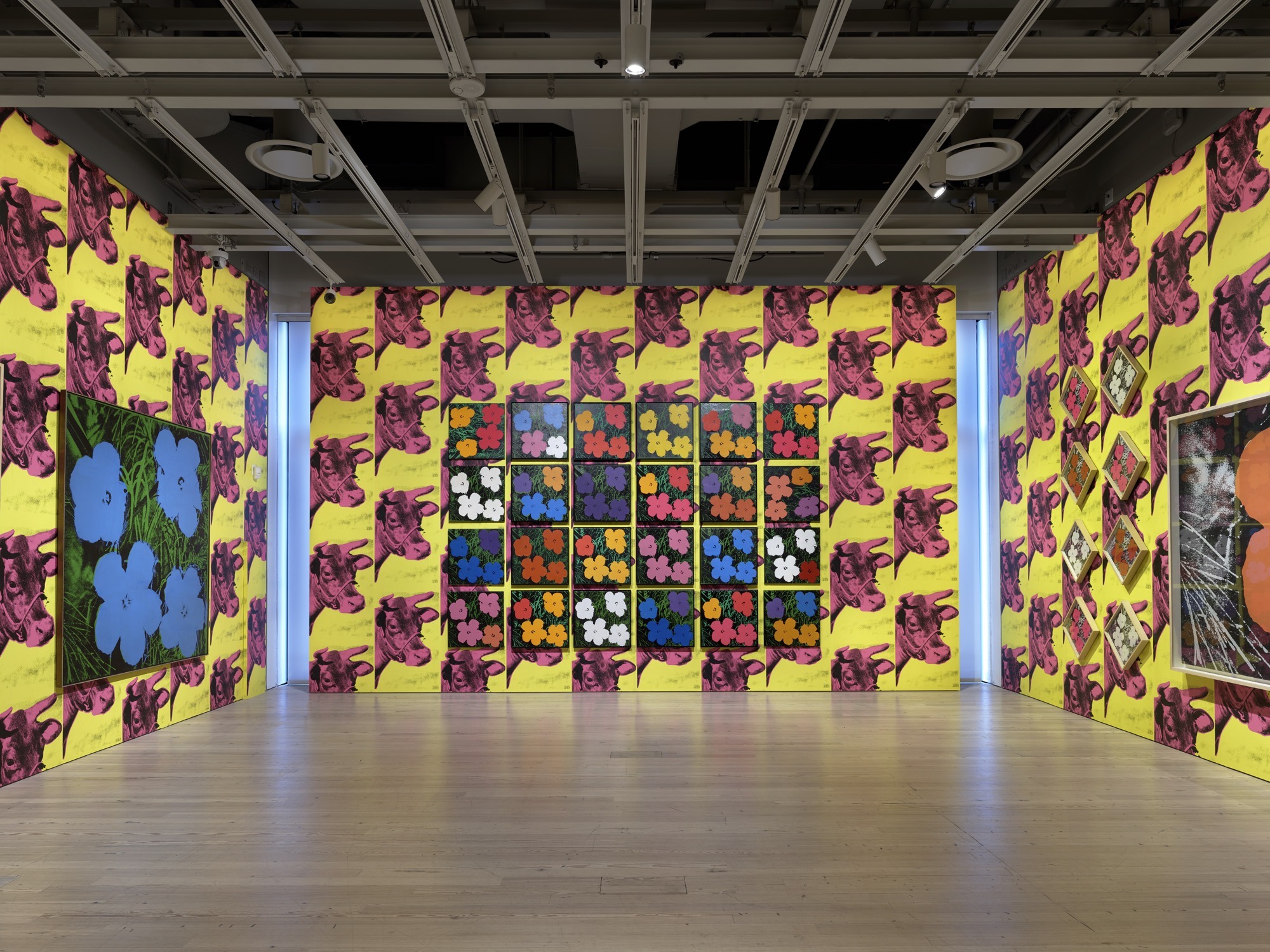
Installation view of Andy Warhol – From A to B and Back Again (Whitney Museum of American Art, New York, November 12, 2018-March 31, 2019). From left to right, top to bottom: Flowers, 1964; Flowers, 1964; Flowers, 1964; Flowers, 1964; Flowers, 1964; Flowers, 1964; Flowers, 1964; Flowers, 1964; Flowers, 1964; Flowers, 1964; Flowers, 1964; Flowers, 1964; Flowers, 1964; Flowers, 1964; Flowers, 1964; Flowers, 1964; Flowers, 1964; Flowers, 1964; Flowers, 1964; Flowers, 1964; Flowers, 1964; Flowers, 1964; Flowers, 1964; Flowers, 1964; Flowers, 1964; Flowers [Large Flowers], 1964-65. Photograph by Ron Amstutz. © 2018 The Andy Warhol Foundation for the Visual Arts, Inc. / Licensed by Artists Rights Society (ARS), New York
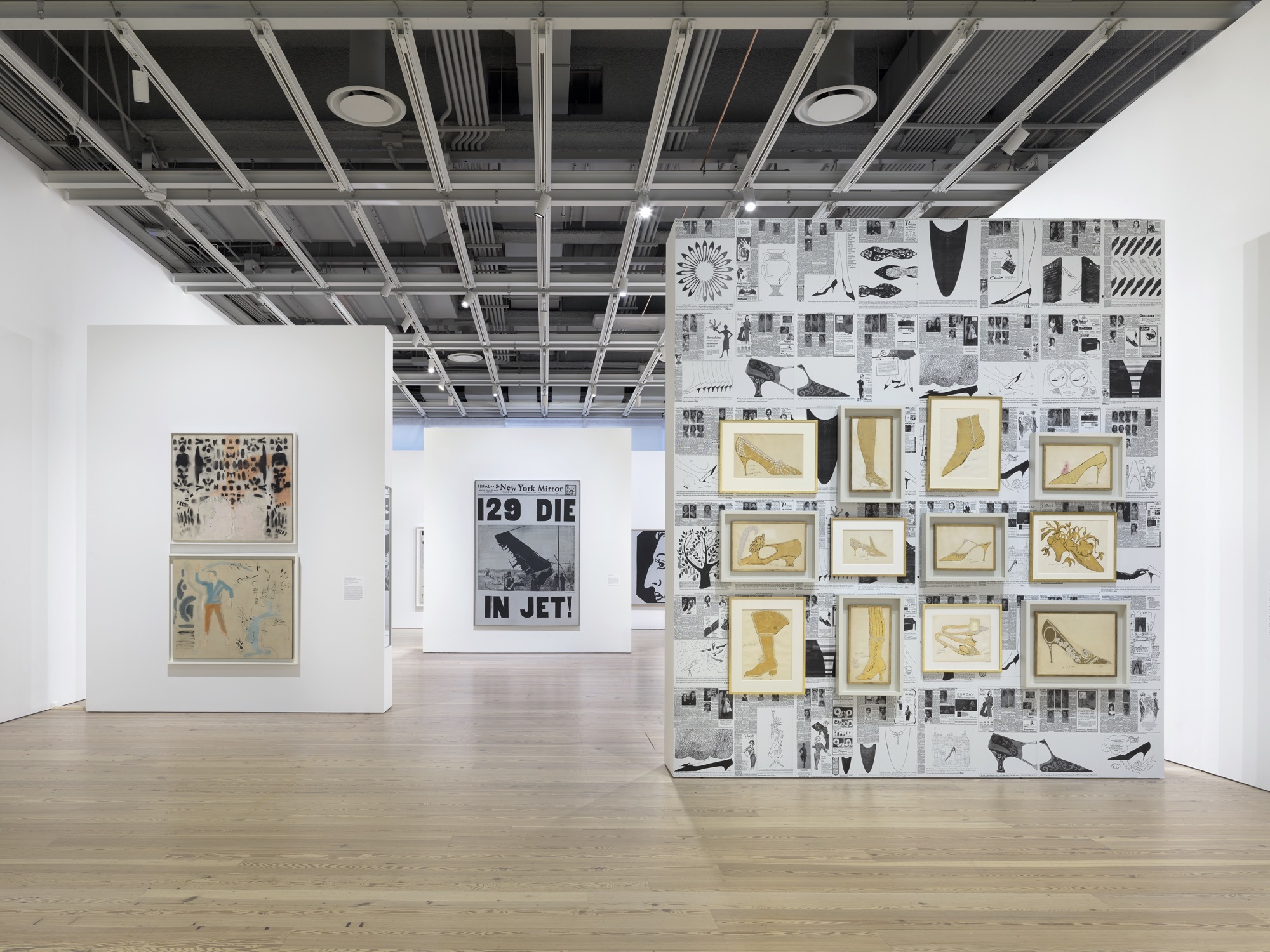
Installation view of Andy Warhol – From A to B and Back Again (Whitney Museum of American Art, New York, November 12, 2018-March 31, 2019). From left to right, top to bottom: Two Heads, c. 1957; Portrait of John Butler with Dancer, 1952; 129 Die in Jet, 1962; Before and After [4], 1962; Mister Moore, c. 1956; Kate Smith, c. 1956; Leo Lerman, c. 1956; David Evans, c. 1956; Beatrice Lielie, c. 1956; Babe Paley, c. 1955; Diana Vreeland, c. 1956; Truman Capote, c. 1956; Elvis Presley, c. 1956; Mae West, c. 1956; Christine Jorgenson, 1956; B.[ernard] G.[rant], c. 1956. Photograph by Ron Amstutz. © 2018 The Andy Warhol Foundation for the Visual Arts, Inc. / Licensed by Artists Rights Society (ARS), New York
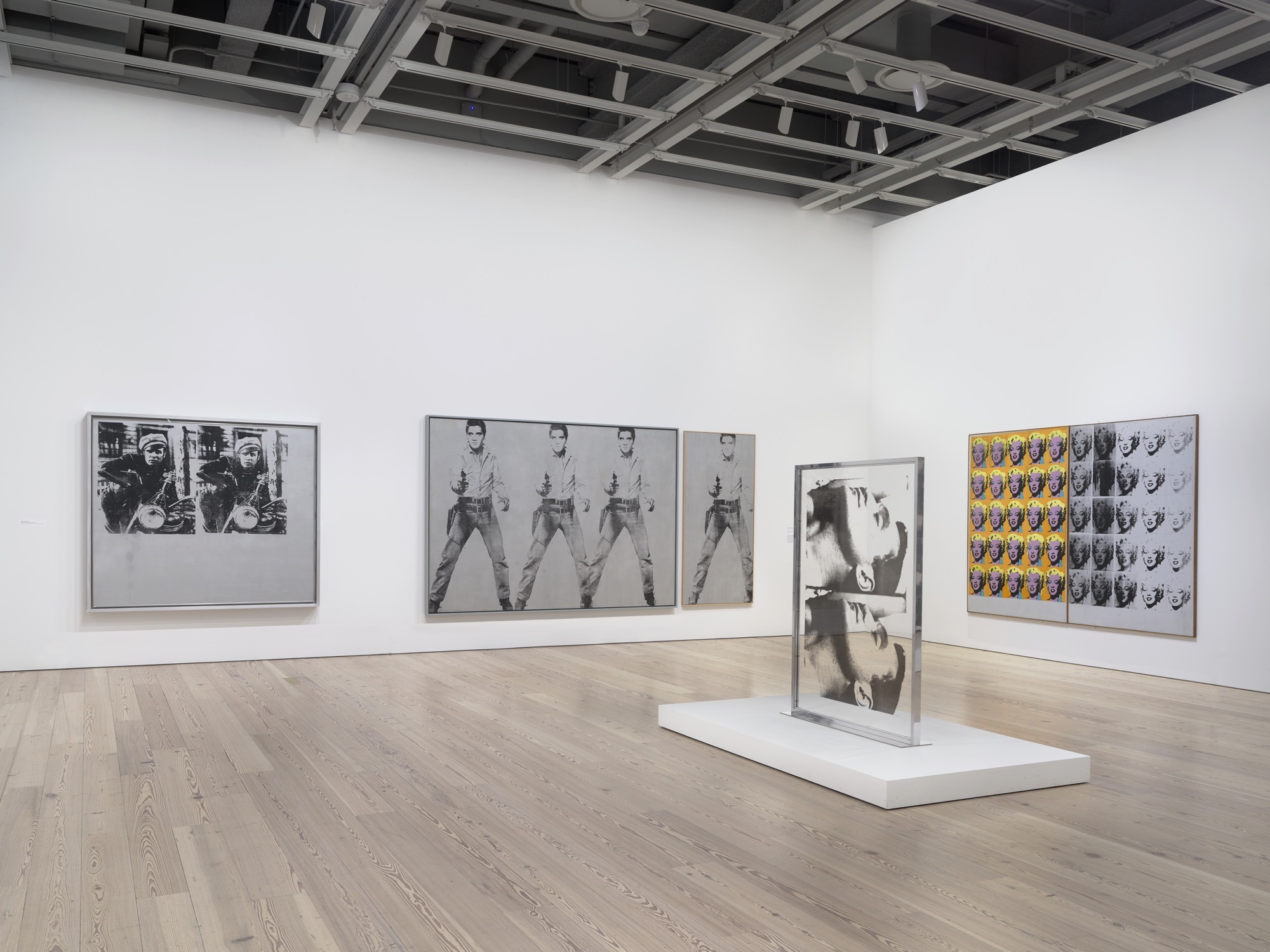
Installation view of Andy Warhol – From A to B and Back Again (Whitney Museum of American Art, New York, November 12, 2018-March 31, 2019). From left to right: Silver Marlon, 1963; Triple Elvis [Ferus Type], 1963; Single Elvis [Ferus Type], 1963; Large Sleep, 1965; Marilyn Diptych, 1962. Photograph by Ron Amstutz. © 2018 The Andy Warhol Foundation for the Visual Arts, Inc. / Licensed by Artists Rights Society (ARS), New York
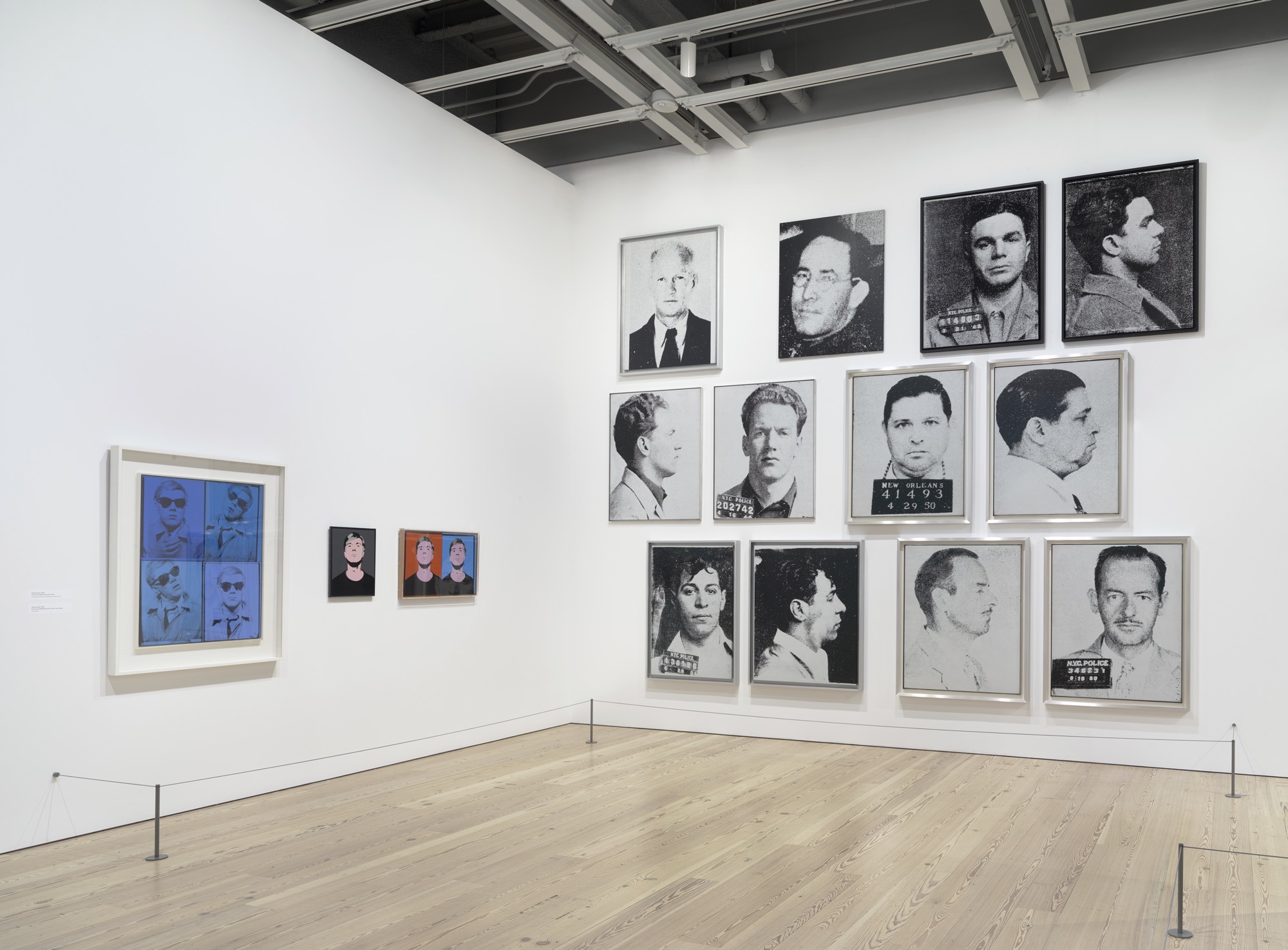
Installation view of Andy Warhol – From A to B and Back Again (Whitney Museum of American Art, New York, November 12, 2018-March 31, 2019). From left to right, top to bottom: Self-Portrait, 1963-64; Self-Portrait, 1964; Self-Portrait, 1964; Most Wanted Men No. 4, Redmond C., 1964; Most Wanted Men No. 3, Ellis Ruiz B., 1964; Most Wanted Men No. 1, John M., 1964; Most Wanted Men No. 6, Thomas Francis C., 1964; Most Wanted Men No. 7, Salvatore V., 1964; Most Wanted Men No. 12, Frank B., 1964; Most Wanted Men No. 5, Arthur Alvin M., 1964. Photograph by Ron Amstutz. © 2018 The Andy Warhol Foundation for the Visual Arts, Inc. / Licensed by Artists Rights Society (ARS), New York
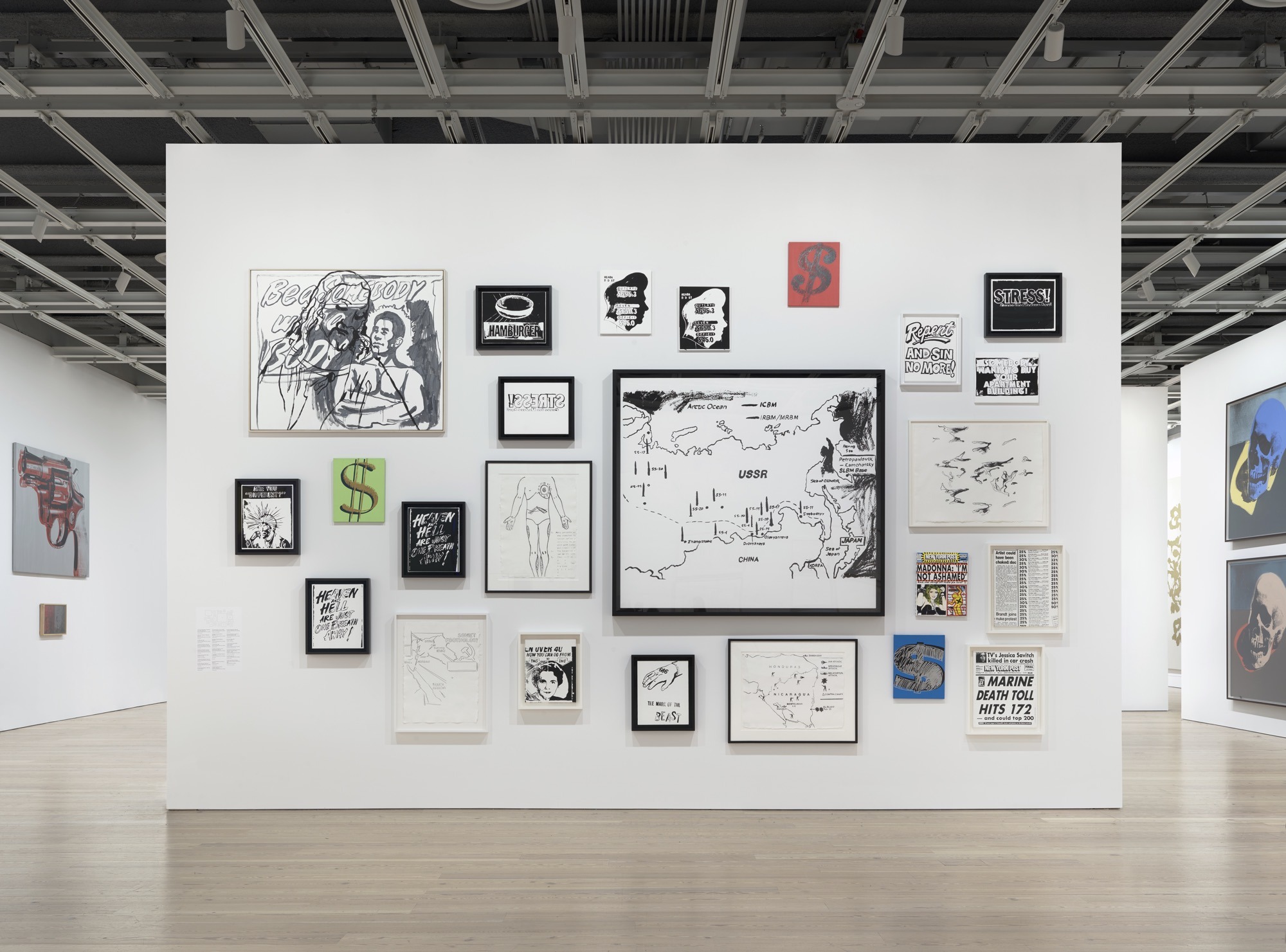
Installation view of Andy Warhol – From A to B and Back Again (Whitney Museum of American Art, New York, November 12, 2018-March 31, 2019). From left to right, top to bottom: Gun, 1981-82; Self-Portrait with Skull, 1978; The Last Supper (Be a Somebody with a Body), 1985-86; Hamburger (Negative), 1985-86; Reagan Budget, 1985-86; Dollar Sign, 1981; Repent and Sin No More! (Positive), 1985-86; Stress! (Negative), 1985-86; Somebody Wants to Buy Your Apartment Building!, 1985; Are You “Different”? (Negative), 1985-86; Dollar Sign, 1981; Heaven and Hell are Just One Breath Away! (Negative), 1985-86; Stress! (Positive), 1985-86; Physiological Diagram, 1985-86; Map of Eastern U.S.S.R., Missile Bases, 1985-86; Camouflage, 1987; Andy Warhol and Keith Haring, Untitled, 1985; Daily News (Gimbel’s Anniversary Sale/Artist Could Have Choked), 1983; Heaven and Hell are Just One Breath Away! (Positive), 1985-86; Map: Soviet Footholds, 1985; Over 40 (How You Can), 1986; Mark of the Beast (Positive), c. 1985-86; Map: Nicaragua and Honduras, 1984-85; Dollar Sign, 1981; New York Post, Front Page (“Jessica Savitch/Marine Death Toll”), 1983; Skull, 1976; Skull, 1976. Photograph by Ron Amstutz. © 2018 The Andy Warhol Foundation for the Visual Arts, Inc. / Licensed by Artists Rights Society (ARS), New York
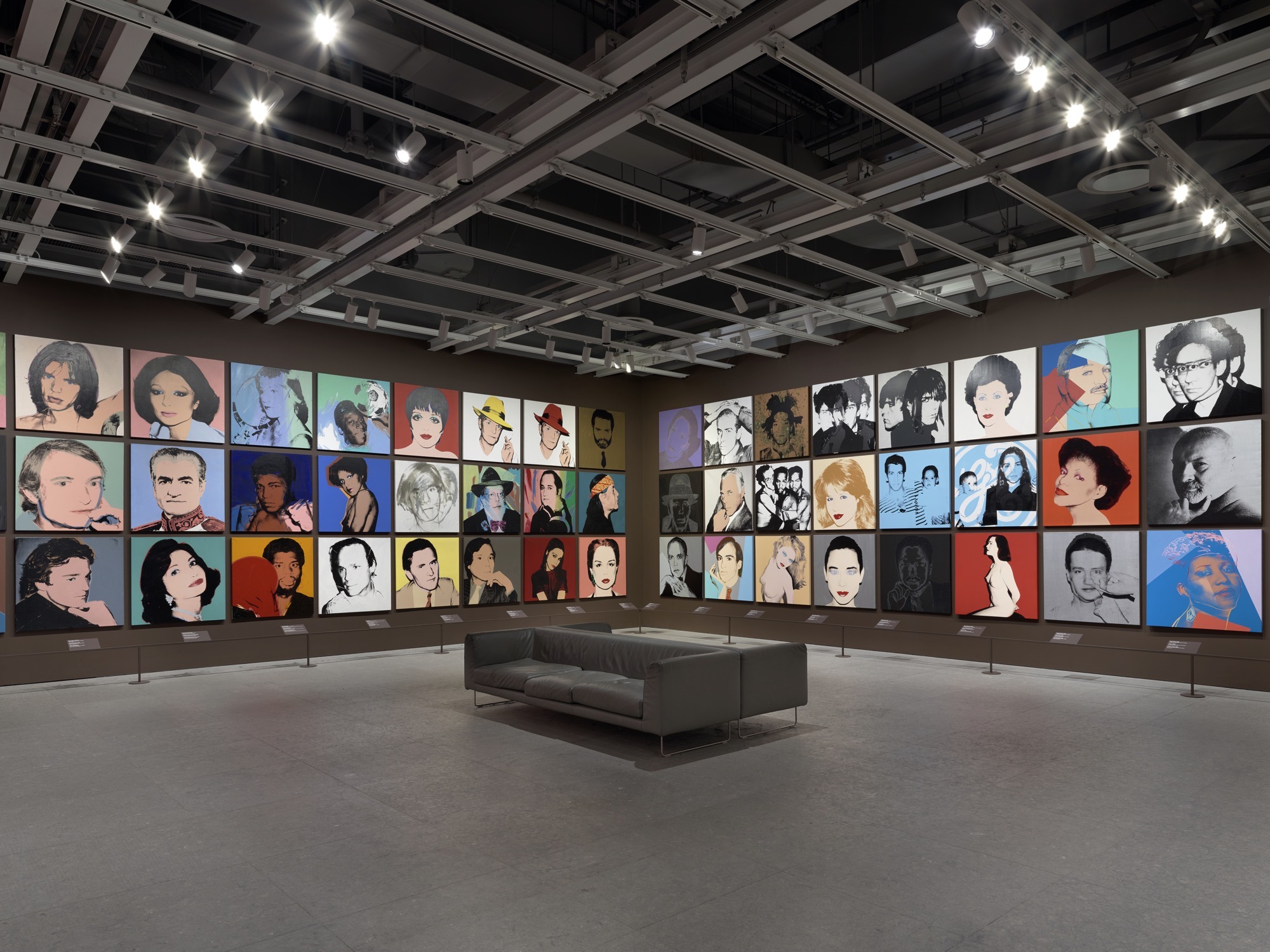
Installation view of Andy Warhol – From A to B and Back Again (Whitney Museum of American Art, New York, November 12, 2018-March 31, 2019). Left wall, left to right, top to bottom: Mick Jagger, 1975-76; Farah Diba Pahlavi, 1976; Chris Evert, 1977; Pelé, 1977; Liza Minnelli, 1978; Truman Capote, 1979; Truman Capote, 1979; Gianni Versace, 1979-80; Roy Lichtenstein, 1976; Mohammad Reza Shah Pahlavi, 1976; Muhammad Ali, 1977; Corice Arman, 1977; Self-Portrait, 1978; Henry Geldzahler, 1979; Neil Sedaka, 1979; R.C. Gorman, 1979; Jamie Wyeth, 1976; Ashraf Pahlavi, Princess of Iran, 1977; Kareem Abdul Jabar, 1977; Michael Heizer, 1978; Thomas Ammann, 1978; John Reinhold, 1979; Berkeley Reinhold, 1979; Carolina Herrera, 1979. Right wall, left to right, top to bottom: Martha Graham, 1980; Francesco Clemente, 1981; Jean-Michel Basquiat, 1982; Robert Mapplethorpe, 1983; Stephen Sprouse, 1984; Portrait of Emily Fisher Landau, 1984; Douglas Cramer, 1985; Peter Halley, 1986; Diamond Dust Joseph Beuys, 1980; Giorgio Armani, 1981; Keith Haring and John Dubose, 1983; Pia Zadora, 1983; Kenny and Zena Scharf, 1984; Teresa and Zena Scharf, 1984; Corice Arman, 1986; Arman, 1986; David Whitney, 1980; Jon Gould, 1981; Cornelia Guest, 1983; Tina Chow, 1983-84; Michael Chow, 1984; Pat Hearn, 1985; Donald Baechler, 1986; Aretha Franklin, 1986. Photograph by Ron Amstutz. © 2018 The Andy Warhol Foundation for the Visual Arts, Inc. / Licensed by Artists Rights Society (ARS), New York
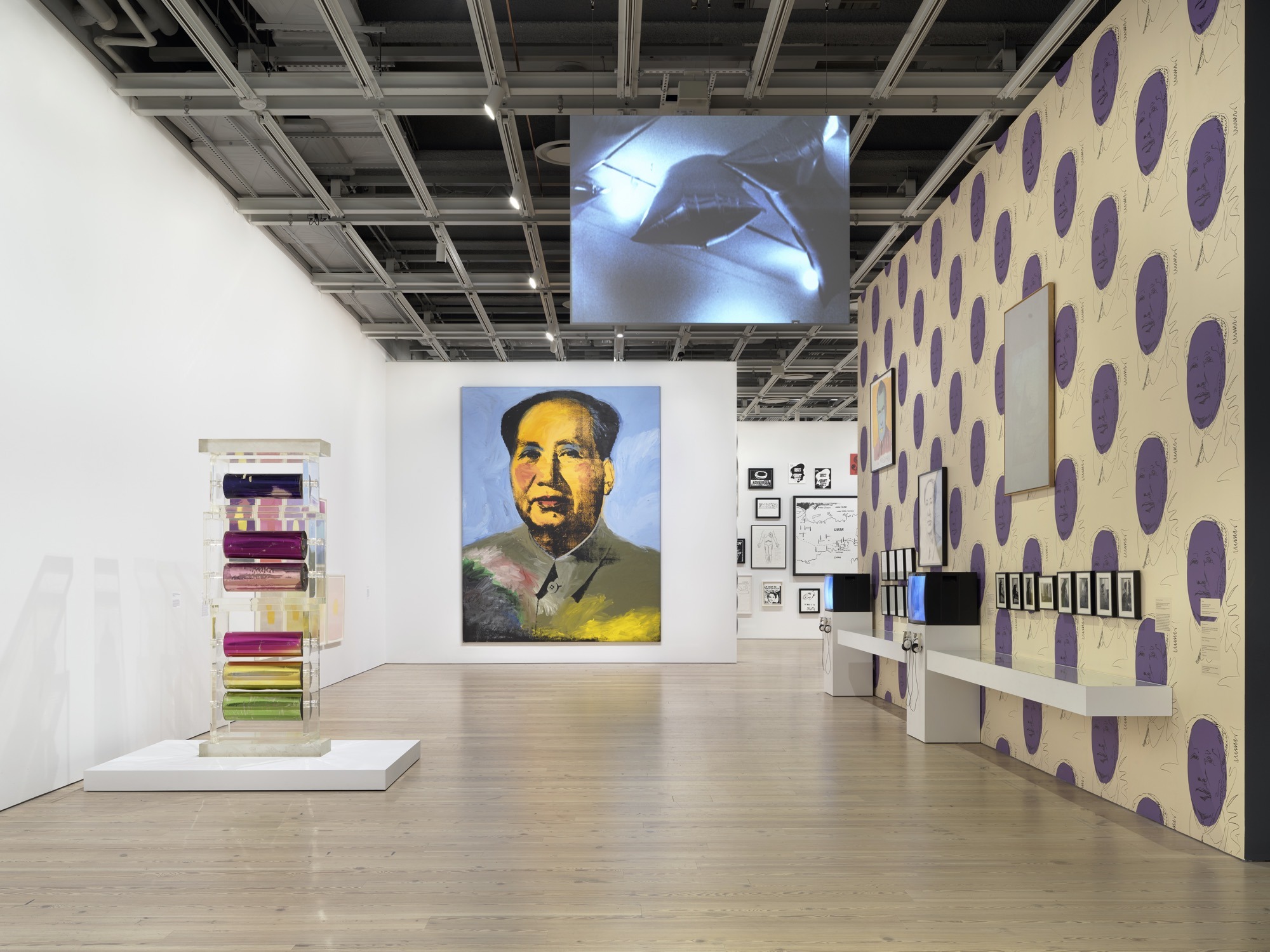
Installation view of Andy Warhol – From A to B and Back Again (Whitney Museum of American Art, New York, November 12, 2018-March 31, 2019). From left to right: Mylar and Plexiglas Construction, c. 1970; Mao, 1972; Willard Mass, Andy Warhol’s Silver Flotations, 1966; Vote McGovern, 1972; Mao, 1973; White Painting, 1964. Photograph by Ron Amstutz. © 2018 The Andy Warhol Foundation for the Visual Arts, Inc. / Licensed by Artists Rights Society (ARS), New York
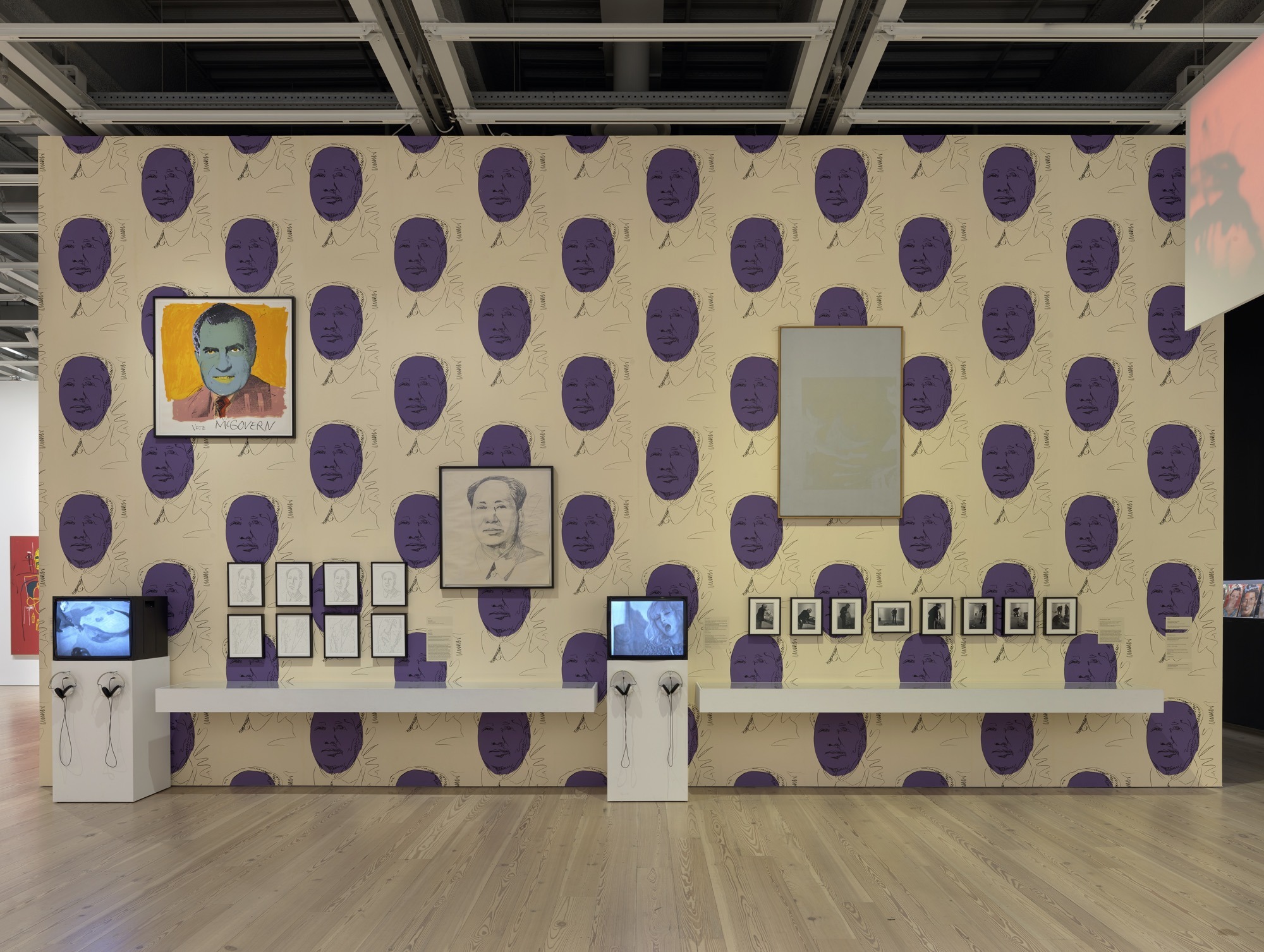
Installation view of Andy Warhol – From A to B and Back Again (Whitney Museum of American Art, New York, November 12, 2018-March 31, 2019). From left to right: Factory Diary: Andy Paints Mao, 1972; Vote McGovern, 1972; Mao (Edition 4/300), 1973; Mao (Edition 27/300), 1973; Mao (Edition 32/300), 1973; Mao (Edition 39/300), 1973; Mao (Edition 103/300), 1973; Mao (Edition 204/300), 1973; Mao (Edition 242/300), 1973; Mao (Edition 261/300), 1973; Mao, 1973; Factory Diary: Andy Warhol, Geri Miller, Candy Darling at the Factory, c. 1971-72; Michael Kostiuk, Andy Warhol vacuuming the carpet for an installation piece at Finch College Museum of Art, c. 1972; White Painting [Torso], 1966; Ronald Nameth, Andy Warhol’s Exploding Plastic Inevitable, 1966. Photograph by Ron Amstutz. © 2018 The Andy Warhol Foundation for the Visual Arts, Inc. / Licensed by Artists Rights Society (ARS), New York
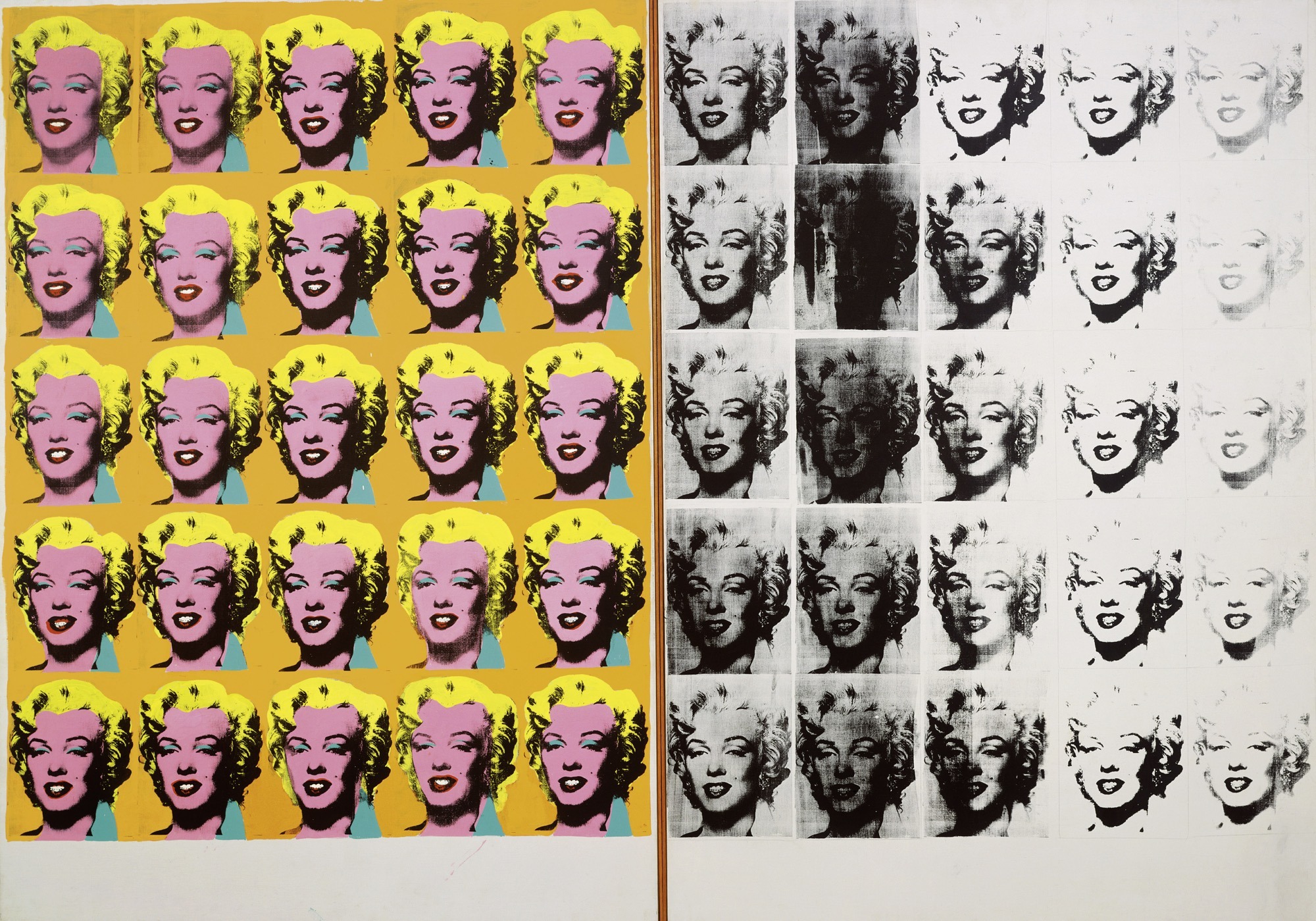
Andy Warhol (1928–1987), Marilyn Diptych, 1962. Acrylic, silkscreen ink, and graphite on linen, two panels: 80 7/8 x 114 in. (205.4 x 289.6 cm) overall. Tate, London; purchase 1980 © The Andy Warhol Foundation for the Visual Arts, Inc. / Artists Rights Society (ARS) New York
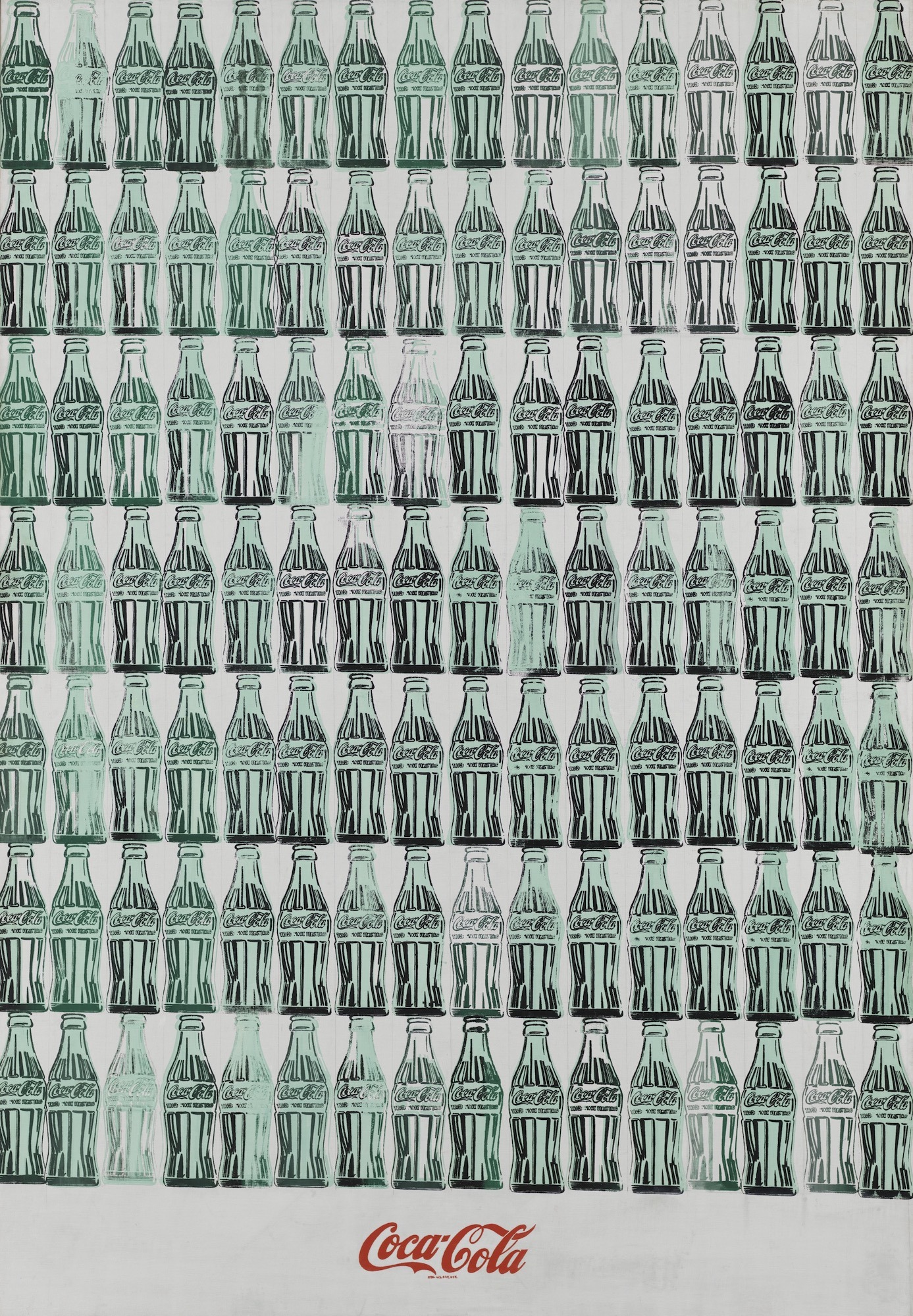
Andy Warhol (1928-1987), Green Coca-Cola Bottles, 1962. Acrylic, screenprint, and graphite pencil on canvas, 82 3/4 x 57 1/8 in. (210.2 x 145.1 cm). Whitney Museum of American Art, New York; purchase with funds from the Friends of the Whitney Museum of American Art 68.25. © 2018 The Andy Warhol Foundation for the visual Arts, Inc./ Artists Rights Society (ARS), N.Y.
Few American artists are as ever-present and instantly recognizable as Andy Warhol (1928–1987). Through his carefully cultivated persona and willingness to experiment with non-traditional art-making techniques, Warhol understood the growing power of images in contemporary life and helped to expand the role of the artist in society. This exhibition—the first Warhol retrospective organized by a U.S. institution since 1989—reconsiders the work of one of the most inventive, influential, and important American artists. Building on a wealth of new materials, research and scholarship that has emerged since the artist’s untimely death in 1987, this exhibition reveals new complexities about the Warhol we think we know, and introduces a Warhol for the 21st century.
About the Exhibition
The exhibition positions Warhol's career as a continuum, demonstrating that he didn't slow down after surviving the assassination attempt that nearly took his life in 1968, but entered into a period of intense experimentation. The show illuminates the breadth, depth, and interconnectedness of the artist’s production: from his beginnings as a commercial illustrator in the 1950s, to his iconic Pop masterpieces of the early 1960s, to the experimental work in film and other mediums from the 1960s and 70s, to his innovative use of readymade abstraction and the painterly sublime in the 1980s. His repetitions, distortions, camouflaging, incongruous color, and recycling of his own imagery challenge our faith in images and the value of cultural icons, anticipating the profound effects and issues of the current digital age.
This is the largest monographic exhibition to date at the Whitney's new location, with more than 350 works of art, many assembled together for the first time.
The exhibition is organized by Donna De Salvo, Deputy Director for International Initiatives and Senior Curator, with Christie Mitchell, senior curatorial assistant, and Mark Loiacono, curatorial research associate.
About the Exhibition
The exhibition positions Warhol's career as a continuum, demonstrating that he didn't slow down after surviving the assassination attempt that nearly took his life in 1968, but entered into a period of intense experimentation. The show illuminates the breadth, depth, and interconnectedness of the artist’s production: from his beginnings as a commercial illustrator in the 1950s, to his iconic Pop masterpieces of the early 1960s, to the experimental work in film and other mediums from the 1960s and 70s, to his innovative use of readymade abstraction and the painterly sublime in the 1980s. His repetitions, distortions, camouflaging, incongruous color, and recycling of his own imagery challenge our faith in images and the value of cultural icons, anticipating the profound effects and issues of the current digital age.
This is the largest monographic exhibition to date at the Whitney's new location, with more than 350 works of art, many assembled together for the first time.
The exhibition is organized by Donna De Salvo, Deputy Director for International Initiatives and Senior Curator, with Christie Mitchell, senior curatorial assistant, and Mark Loiacono, curatorial research associate.
